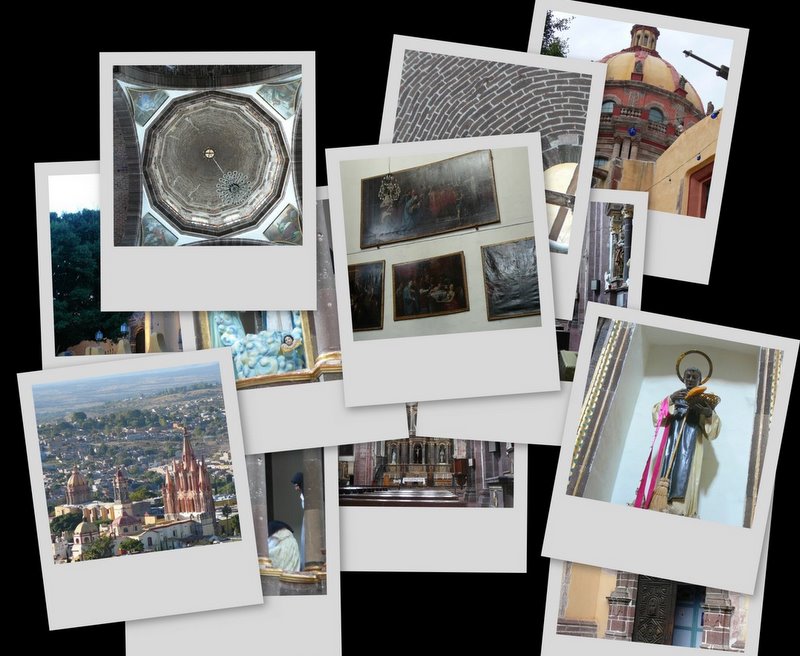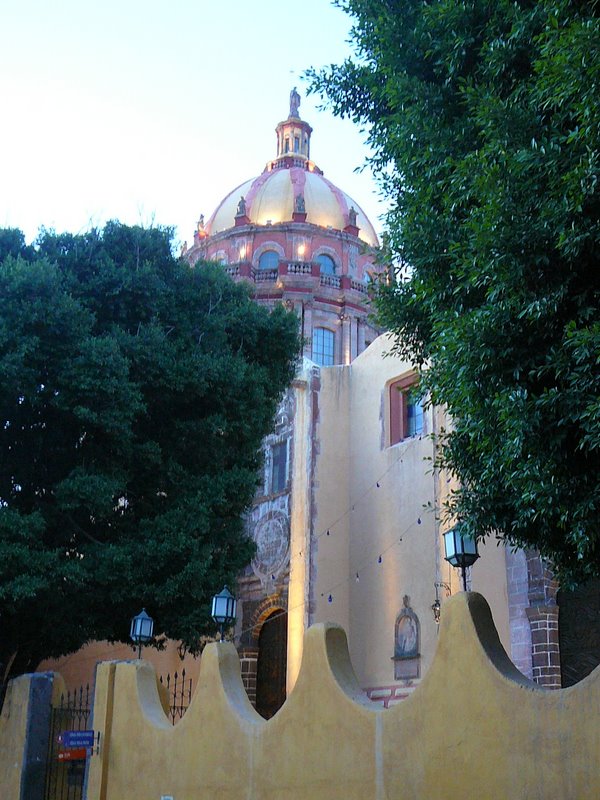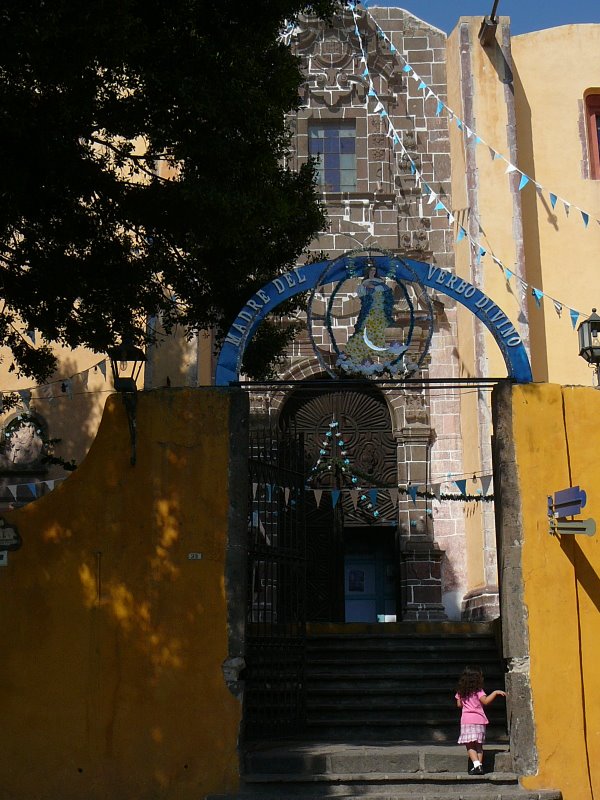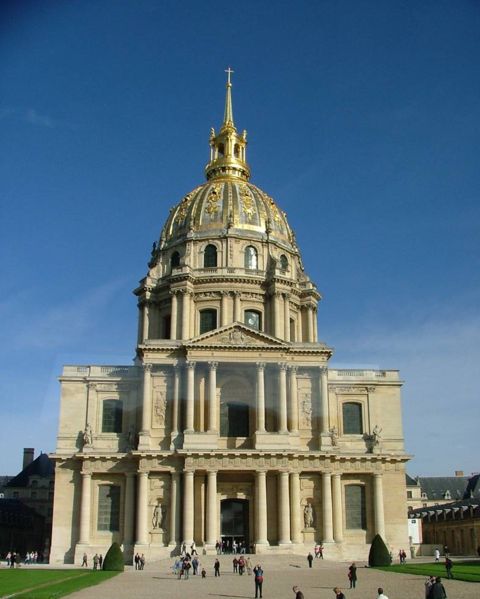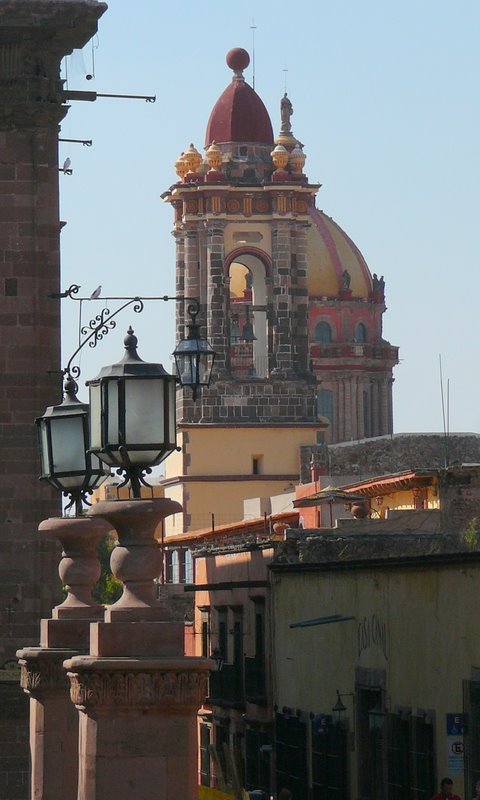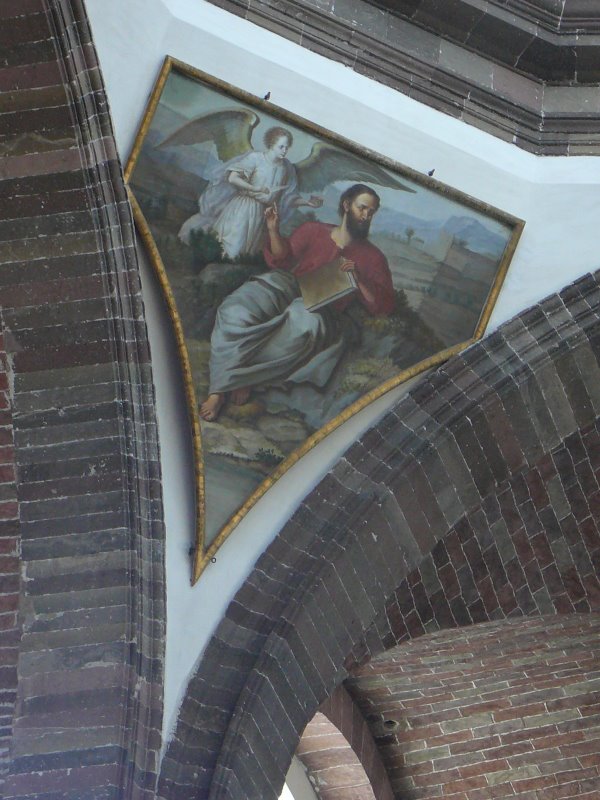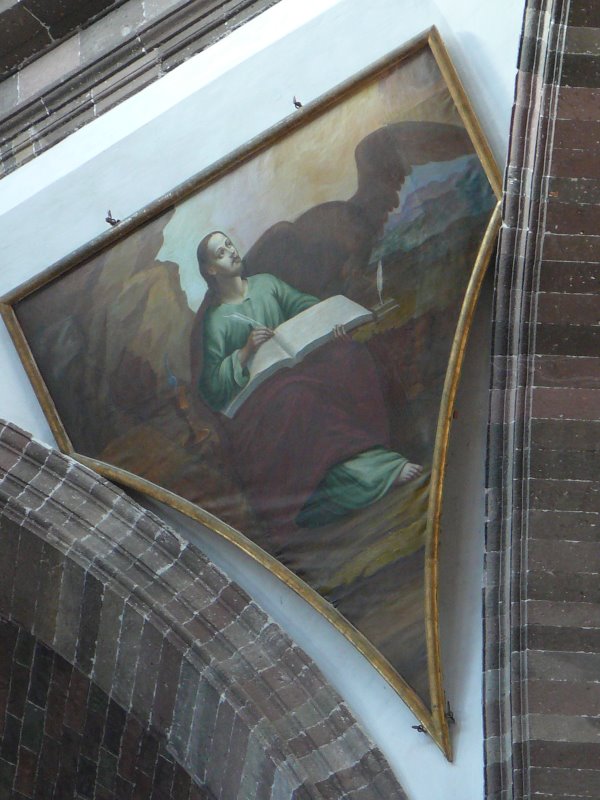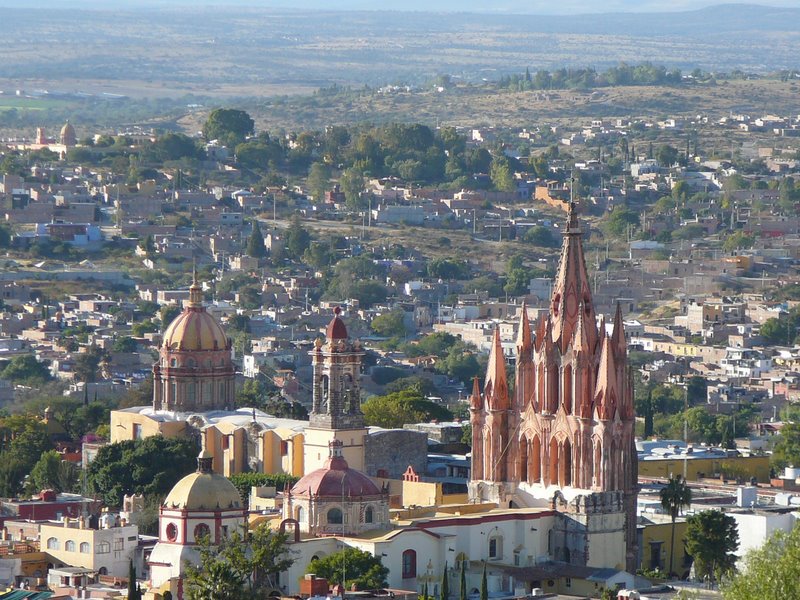
This photo shows two of San Miguel's most popular churches.
Stretching across the foreground is, of course, the iconic La
Parroquia with its quasi-gothic tower. At left center with its
own distinctive domed tower and somewhat funky steeple is the Church of
the Immaculate Conception which Miguelinos affectionately call
Las Monjas
("the Nuns.") In fact, it still contains a small cloister of
active nuns -- the Sisters of the Immaculate Conception -- the same
order that founded the convent in 1754 when the town's richest
debutante decided to live the convent life and started her own order.
[41]
Both the strange tower at right and the large classic dome at left had the same builder. Read on!
More than just a church, Las Monjas is a complex although some of its
space has been taken over for secular purposes (namely art and culture,
the new religions?) Originally the convent's property was much
more extensive, including gardens and orchards. Later revolutions
caused the Mexican government to confiscate most religious property
except for the inside of churches. (This also saddled them with
maintaining the exterior of many decaying buildings).
We'll talk about the art space, called the Nigromonte center, elsewhere (
click here
to go there now). As you can see from the above picture, Las
Monjas has a fenced-in courtyard. (The picture at right shows the
entranceway decorated for the holy day; click on it to see it
enlarged). We found this used for band concerts and vendors
selling enchiladas on the Holiday when we visited.
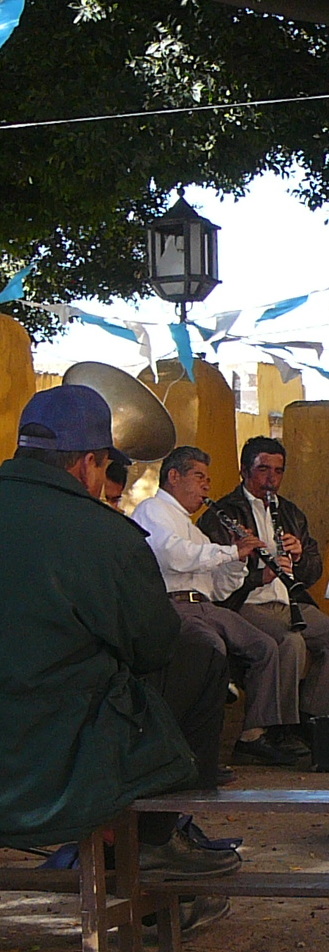 |
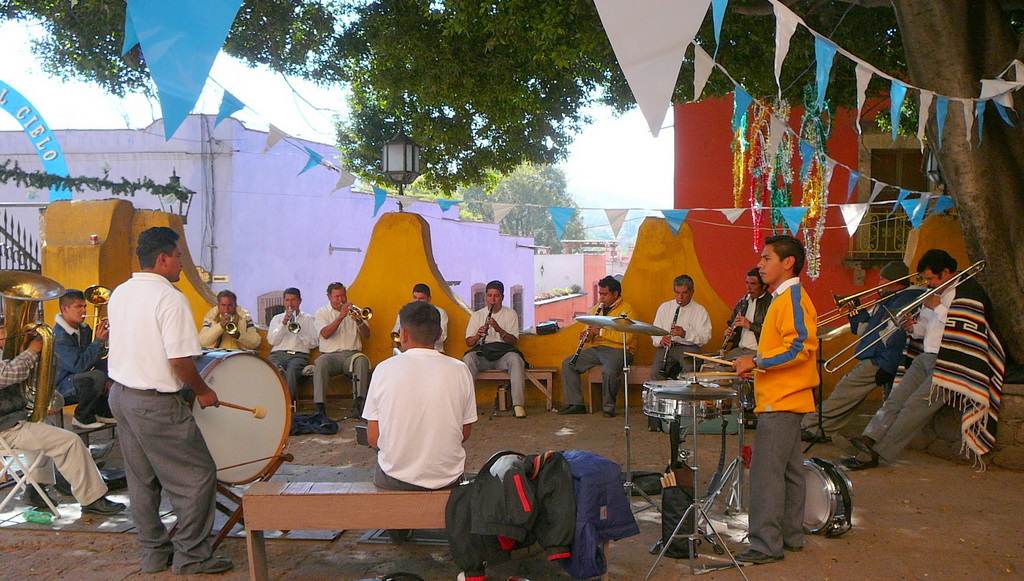
While
this is a fairly large band, no one seems to be reading music (or even
to have brought any). It may be one of the local bands where
children are given instruments and eventually learn the parts (or maybe
not, given the sound of many of these groups.) At any rate, they
add a festive air to the holy day.
|
Ceferino Gutierrez's second church
Las Monjas' most distinctive architectural feature is its dome, patterned after that on the Chapel of
Les Invalides
on Paris's left bank (see thumbnail from Wikipedia above right).
While Paris had the Versailles-famous Jules Hardouin-Mansart
do the one shown in thumbnail, San Miguel had its own famous
architect, Ceferino Gutierrez, frame the
symmetry of this high dome
[45] two centuries later. Yes, the same illiterate builder of the Gothesque tower of
La Parroquia! Did he who made the lamb make thee?
The Immaculate Conception
Here's
a view of Los Monjas taken from the Jardin, ground zero in San
Miguel. Note the statue of the Immaculate Conception atop the
dome, peeking out beyond Los Monjas's steeple completed in 1842.
We
visited on December 8th -- the feast of the Immaculate Conception,
honoring the woman that the archangel Gabriel greeted as "full of
grace." Immaculate Conception
refers to the long standing Catholic belief (solidified as dogma in
1854) that Mary was born without the original sin that Adam and Eve
inflicted upon their descendants by messing up in the Garden of Eden.
Ah
for the days when the world was young and there were still some sins
that were original! Catholics celebrate the Immaculate Conception
on December 8th, exactly nine months before Mary's birth. Do the
math.
In the picture below, note the statues of the saints atop Corinthian columns on Gutierrez's dome.
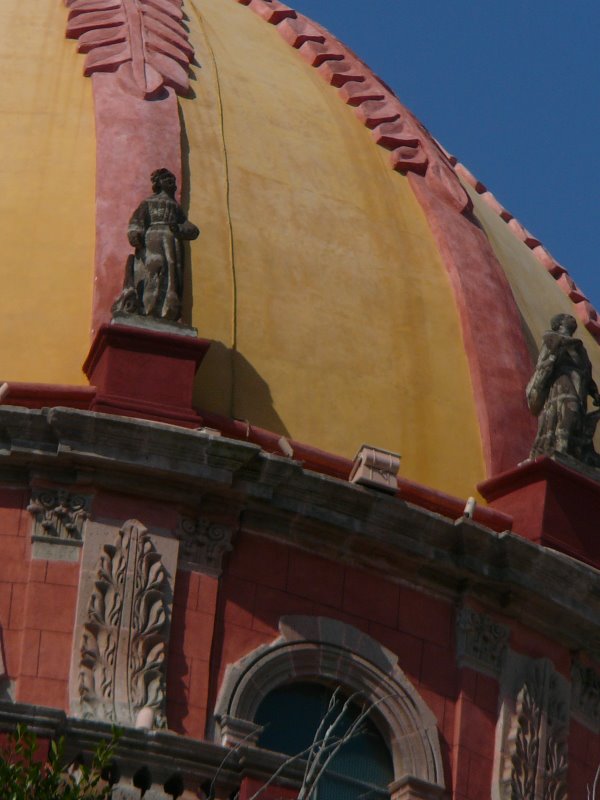
The Foundress
The convent was founded in 1754
after the eldest daughter of the town's most important family
petitioned the King of Spain to found a congregation to be known as the
Sisters of the Immaculate Conception.
Dona Maria
Josefa Lina de la Canal y Hervas was only 16 when she petitioned the
king. With recently deceased parents and a huge fortune, she was
probably the most eligible bachelorette in town. But she held
true to her vocation which seemed to be about piety, not necessarily
good works.[111] The need for a convent was obvious to most of the town as the closest convent was over 100 miles away.
At her death at age 34, Josefa was interred after the most elaborate funeral the town ever witnessed.
Work began on the church in1755 with the dome being added in 1891.
The original church architect was Francisco Martinez Gudino from
Guadalajara.
[42]
Supposedly Gudino was "wildly flamboyant" in his interior decoration.
However, most of the insides were pilfered during one of the
revolutions and we are left with a much different space.
The Interior
Given the huge expanse of land the convent once held, Architect Gudino
expected folks to enter through the main door showing at far left int
he picture below; today most enter from the smaller east door and see
this long view of the nave. These walls were once lined with
frescoes.
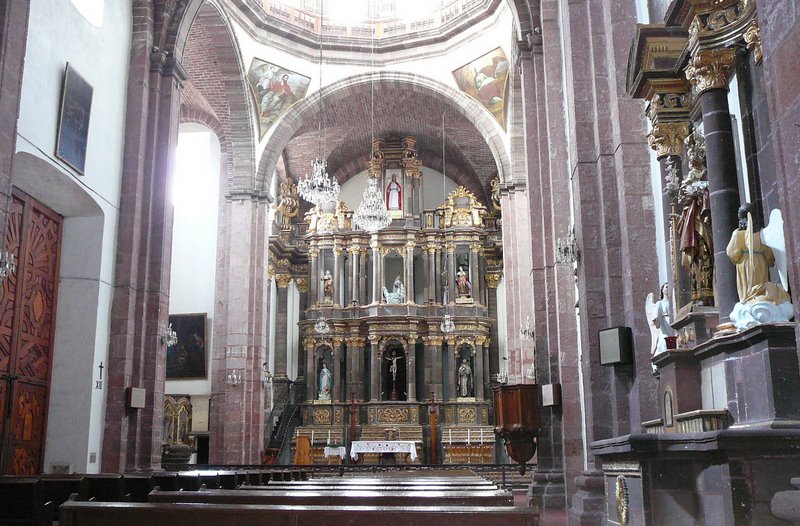
Like any good Mexican church, Los Monjas has its statue of St. Martin
de Porres near the entrance. Born in Lima, Peru,
Martin
was the son of a Spanish nobleman and a freed Black slave. Given
his piety, good works, and frequent miracles, the Dominicans dropped
their racial rules and allowed him into their order. (He had
originally been taken in by them as a servant.)
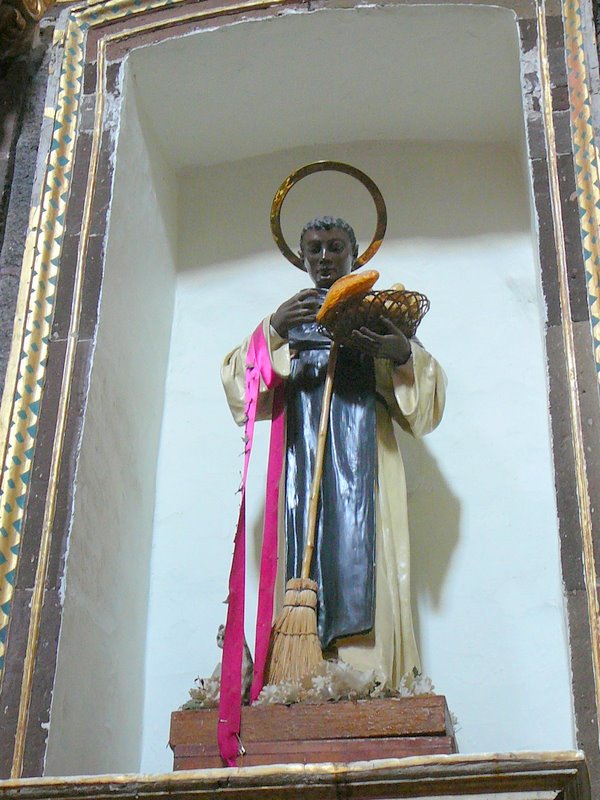
Martin is frequently shown with a broom as he viewed all work, no
matter how menial, as sacred. He is often shown with dogs or cats
(as here) as he would eat from their dishes to show humility. It
took the church more than 300 years to canonize him.
The Cloister
Inside we found several nuns from the cloister attending to the statue
of the Immaculate Conception in the second story above the altar, no
doubt dressing her up for her feast day. The area is accessed
from the back by hidden ladders.
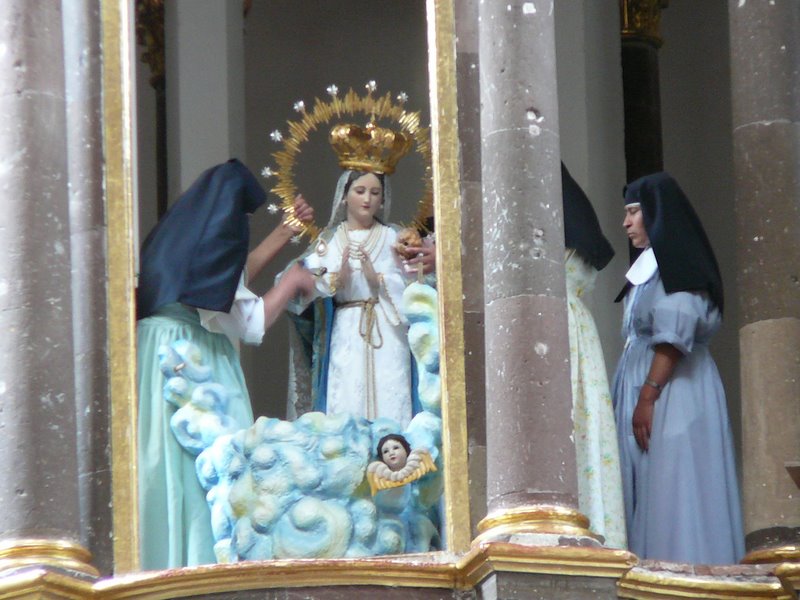
Cloistered nuns withdraw from the world but Miguelinos often see these
women going about their work which include ringing the convent bells.
The convent was designed for 66 cloistered nuns and 6 secular
nuns (who would deal with the outside world). Each was to bring a
dowry of
4000
pesos. The convent complex itself was designed for simplicity.
Most Mexican convents were really retirement homes for wealthy
women and included space for their maids. Not so here where the
simple rooms had room for only one person.
Dome Interior
If the church's original architect was known for his flamboyant
interiors, the message did not reach Ceferino Gutierrez when he
added the twelve-sided dome 140 years later.
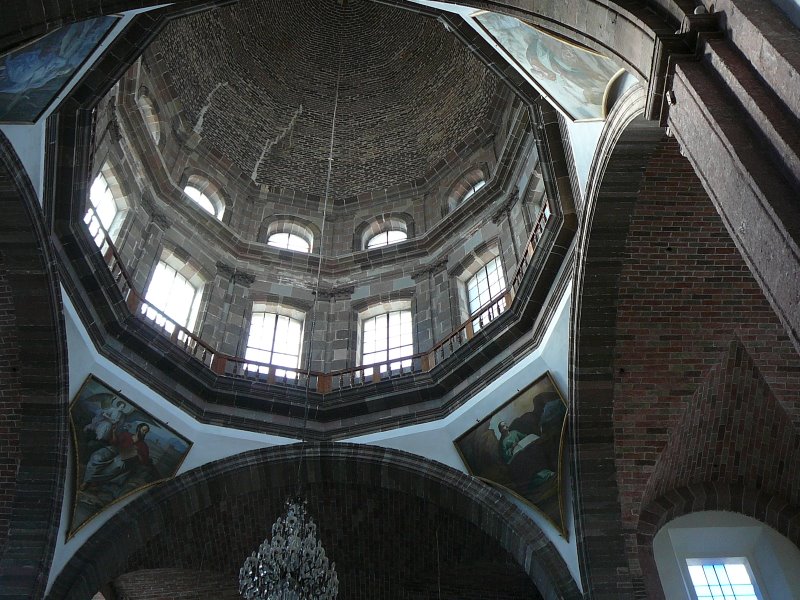
A few more views of the dodecagon:
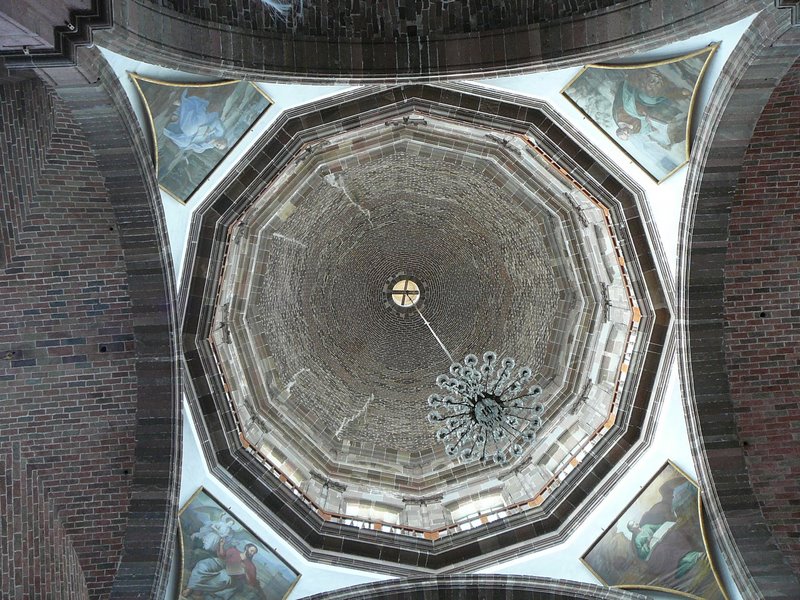
Most of the Church iconography comes in threes and most dome edges have
four pillars -- this makes the four evangalists quite popular as we see
here. Below we see the inner dome's unadorned stone
work and simple mooring for its fancy chandelier...
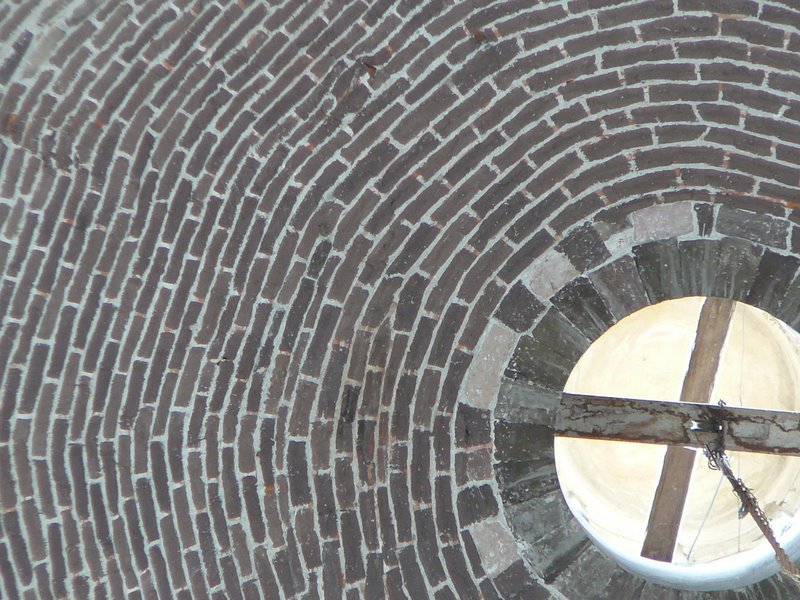
Let's get a little closer to a couple of the four evangelists.
John is to the right with his symbol: the eagle, also adopted for
other reasons by the nation of Mexico.
To
the right of the altar hang many large religious pictures, not
particularly distinguished; however their folds suggest that they were
once spirited away ahead of looters during one of the anti-clerical
revolutions.
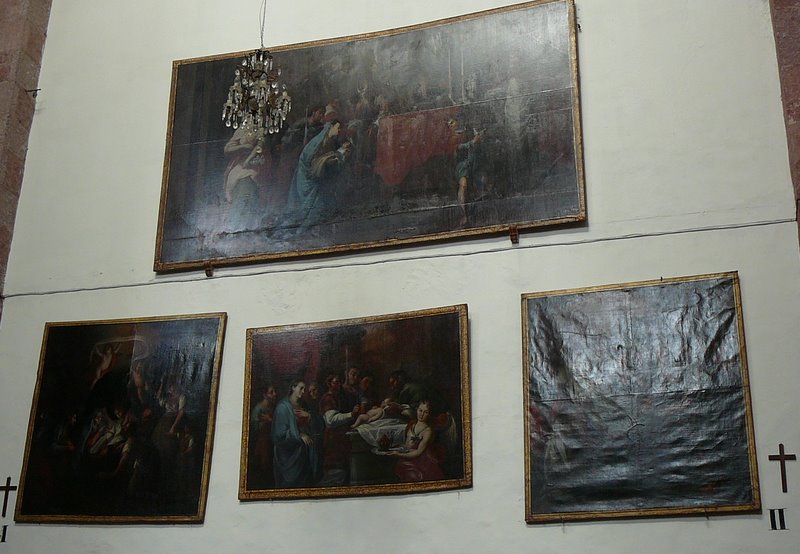
A Gated Community
The entrance to the cloistered community is behind this gate on the right side of the nave.
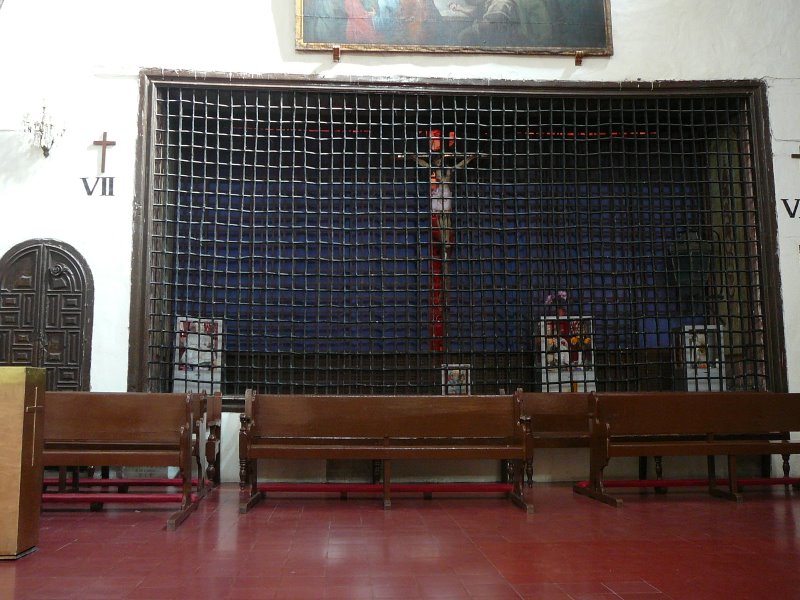
At the far end of the nave, opposite the altar rises this gate in what
would ordinarily be a choir. It's the private chapel of the nuns
who can be heard singing here during services.
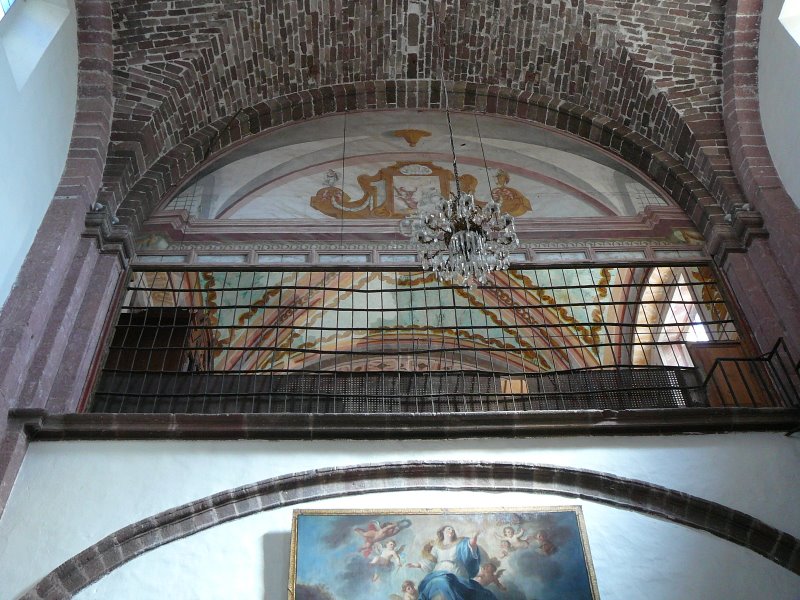
The cloistered chapel sits atop this painting of Mary ascending into
heaven being waved off by the apostles. A grand exit!
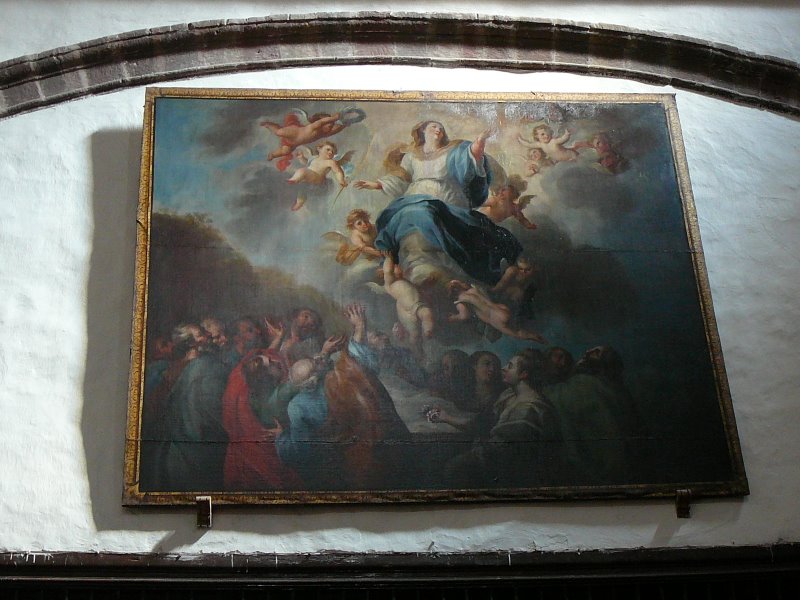
Next door is the convent cloister, now the cultural center that
Miguelinos call "El Nigromante" but whose real name is Bellas Artes.
To see this,
click here.
